Replacing the pool vacuum hose seal is essential to maintaining a pristine swimming environment. Worn or damaged pool vacuum hose seals can lead to leaks, reduced suction power, and ultimately a less clean pool. This guide provides a step-by-step approach to ensure a smooth and successful replacement.
Why do Pool Vacuum Hose Cuffs need Replacement?

Pool vacuum hose cuffs may need replacement due to wear and tear over time. Here’s why they might require replacement, signs of wear and tear to look out for, the consequences of neglecting a damaged hose cuff, and the impact of a faulty hose cuff on pool cleaning efficiency:
- Material Deterioration: Hose cuffs are typically made of rubber or plastic materials that can degrade over time due to exposure to sunlight, pool chemicals, and general wear and tear.
- Cracking or Splitting: Continuous use and exposure to harsh pool environments can cause hose cuffs to develop cracks or splits, compromising their effectiveness and integrity.
- Loss of Flexibility: Over time, hose cuffs may lose their flexibility, becoming stiff and less pliable. This can make it difficult to connect or disconnect the hose from the pool cleaner or skimmer, leading to leaks or other issues.
Identifying Signs of Wear and Tear on Pool Hose Cuffs
Cracks or Splits: Inspect the hose cuffs for any visible cracks, splits, or tears that may compromise their sealing capabilities.
Fading or discoloration: Fading or discoloration of the hose cuffs may indicate exposure to UV radiation, which can weaken the material over time.
Stiffness or Brittle Texture: If the hose cuffs feel stiff or have a brittle texture, it may indicate deterioration of the material.
Consequences of Neglecting a Damaged Hose Cuff
Leakage: A damaged hose cuff can result in leaks where the hose connects to the pool cleaner or skimmer, causing loss of suction and reduced cleaning efficiency.
Water Waste: Leaks from a damaged hose cuff can lead to water wastage as the pool cleaner may not function optimally, requiring longer cleaning cycles or additional water to compensate.
Potential Damage to Equipment: Continued use of a pool vacuum with a damaged hose cuff can put additional strain on the pool pump and filtration system, potentially leading to premature wear and tear on these components.
The Impact of a Faulty Hose Cuff on Pool Cleaning Efficiency
- Reduced Suction: A faulty hose cuff can result in air leaks or water leakage, leading to reduced suction and compromised cleaning performance.
- Incomplete Cleaning: Leaks from a damaged hose cuff may cause the pool cleaner to lose contact with the pool surface or fail to reach certain areas, resulting in incomplete cleaning and leaving behind debris and dirt.
Regular inspection and timely replacement of pool vacuum hose cuffs are essential to ensuring optimal performance and efficiency of the pool cleaning system.
Choosing the Right Replacement Hose Cuff for Your Swimming Pool
When choosing the right replacement hose cuff for your swimming pool, it’s essential to understand the different types available, how to measure for the perfect fit, and where to find high-quality pool supplies.
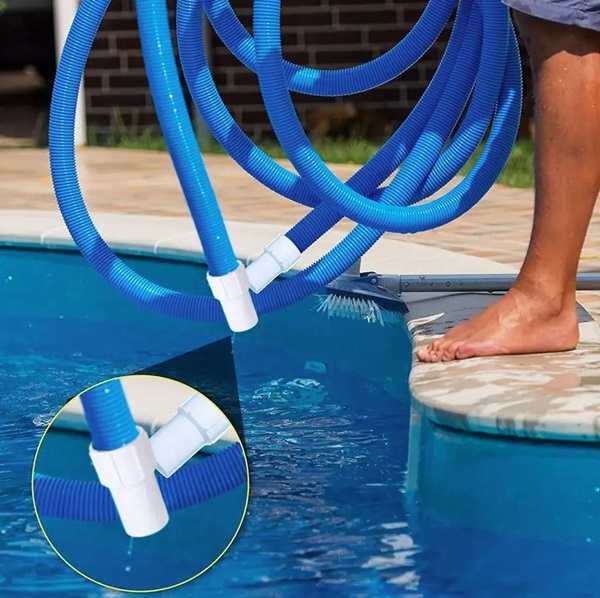
Understanding the Different Types of Pool Hose Cuffs
- Inch Cuffs: Inch cuffs are standard hose cuffs that connect the pool vacuum hose to the pool cleaner or skimmer inlet. They come in various sizes, typically ranging from 1.25 inches to 2 inches in diameter, to accommodate different hose sizes.
- Swivel Cuffs: Swivel cuffs feature a built-in rotating mechanism that allows the hose to swivel freely, reducing the risk of tangling and kinking during operation. Swivel cuffs are especially beneficial for robotic and automatic pool cleaners that require greater maneuverability.
Measuring for the Perfect Fit: Inch vs. Swivel Cuffs
- Inch Cuffs: To measure for the perfect fit with inch cuffs, simply measure the diameter of your pool vacuum hose and select a matching cuff size. Ensure that the cuff is compatible with the hose diameter to achieve a secure and watertight connection.
- Swivel Cuffs: When choosing a swivel cuff, consider its compatibility with your pool cleaner or skimmer inlet. Swivel cuffs typically come in standard sizes, so ensure that the cuff diameter matches the inlet size of your pool cleaner or skimmer.
Where to Find High-Quality Pool Supply for Replacement?
Local Pool Supply Stores: Many local pool supply stores carry a variety of replacement hose cuffs in different sizes and types. Visit your nearest pool supply store to browse their selection and find the right cuff for your pool vacuum hose.
Online Retailers: Online retailers such as Amazon, PoolSupplyWorld, and In The Swim offer a wide range of pool supplies, including replacement hose cuffs. You can easily compare prices and read reviews to find high-quality replacements for your swimming pool.
Manufacturer Websites: If you prefer to purchase directly from the manufacturer, visit the websites of pool equipment brands such as Polaris, Hayward, or Zodiac to find genuine replacement parts, including hose cuffs, for your specific pool cleaner model.
Step-By-Step Guide to Replacing Your Pool Vacuum Hose Cuff

1. Preparing Your Pool Hose for Cuff Replacement
- Turn off Pool Equipment: Before starting the replacement process, turn off your pool pump to ensure safety.
- Drain Water: If there is water inside the pool vacuum hose, drain it completely to avoid spills during the replacement.
- Inspect Hose: Check the hose for any damage or wear that may need attention. Trim any frayed ends if necessary.
2. Removing the Old Cuff: Techniques and Precautions
- Cutting Method: If the old cuff is stubborn or damaged, carefully cut it off using a utility knife or scissors. Be cautious to avoid cutting the hose itself.
- Prying Method: Alternatively, if the old cuff is removable, use a flathead screwdriver or similar tool to pry it off gently. Work around the circumference of the cuff until it loosens and can be removed.
3. Securing the New Hose Cuff: Twist and Tight Techniques
- Inserting the Hose: Slide the open end of the pool vacuum hose onto the barbed end of the new cuff. Ensure a snug fit by pushing the hose all the way onto the cuff.
Twist and Tighten: Twist the hose slightly while pushing it onto the cuff to create a secure seal. This twisting motion helps to ensure a tight fit and prevent leaks.
Clamp or Glue (Optional): For added security, you may choose to use a hose clamp or adhesive to further secure the hose to the cuff. Follow the manufacturer’s instructions for proper application.
4. Testing the Connection:
Once the new cuff is installed, turn on your pool pump and inspect the connection for any signs of leaks or issues. Run the pool vacuum to ensure proper suction and functionality.
By following these step-by-step instructions, you can effectively replace your pool vacuum hose cuff and maintain the optimal performance of your pool cleaning system.
Common Problems and Troubleshooting Hose Cuff Replacement
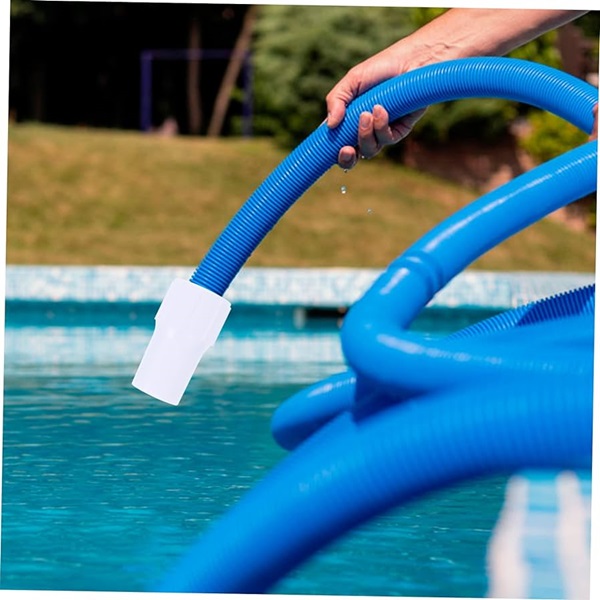
Dealing with a Hose that Won’t Accept the New Cuff
Warm Water Soak: If the hose is stiff and resistant to accepting the new cuff, try soaking the end of the hose in warm water for a few minutes. This can soften the hose material, making it more pliable and easier to stretch over the cuff.
Use Lubrication: Apply a small amount of silicone lubricant or dish soap to the inside of the hose end to reduce friction and help the cuff slide on more easily. Avoid using petroleum-based lubricants, as they can degrade the hose material.
Ensuring a Tight Seal: Avoiding Leaks and Slips
Twisting Motion: As you slide the hose onto the cuff, use a twisting motion to create a tight seal. Twisting the hose while pushing it onto the cuff helps to evenly distribute the material and ensures a secure fit.
Inspect for Proper Fit: After installing the new cuff, visually inspect the connection to ensure that the hose is fully seated on the cuff and there are no gaps or wrinkles. A proper fit is essential for preventing leaks and slips.
Repair Tips for Cracked or Damaged Hose Ends
Trimming Method: If the hose end is damaged or cracked, carefully trim off the damaged portion using a utility knife or scissors. Ensure a clean, straight cut to provide a smooth surface for the new cuff.
Patch or Repair: For minor cracks or damage, you can use a hose repair kit or waterproof tape to patch the affected area. Follow the manufacturer’s instructions for proper application and curing time.
Additional Tips:
- Inspect the Hose: Before replacing the cuff, thoroughly inspect the hose for any other damage or wear that may need attention. Addressing any issues beforehand can help ensure a successful replacement.
- Follow Manufacturer’s Instructions: If you’re using adhesive or a hose clamp to secure the cuff, be sure to follow the manufacturer’s instructions for proper application and curing time.
Enhancing Your Pool Cleaning Experience with the Right Hose Cuff
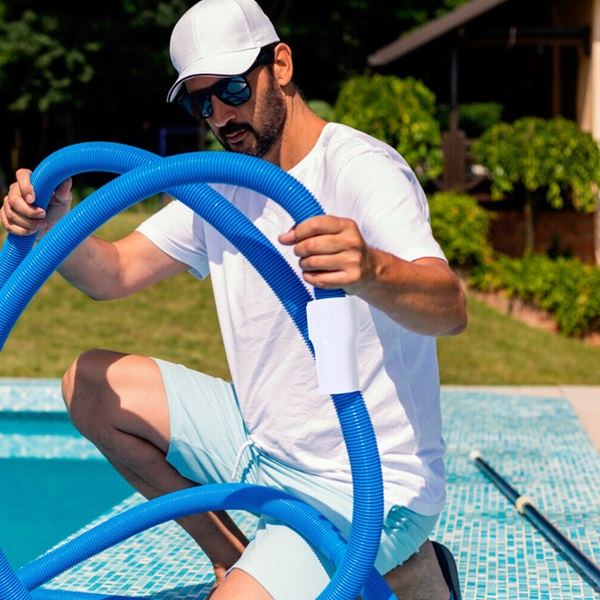
The Role of Swivel Cuffs in Flexible Pool Vacuuming
Enhanced Maneuverability: Swivel cuffs feature a rotating mechanism that allows the hose to move freely without tangling or kinking during operation. This enhances the maneuverability of the pool vacuum, allowing it to cover more surface area efficiently.
Reduced Friction: Swivel cuffs reduce friction between the hose and pool surfaces, minimizing wear and tear on both the hose and pool finish. This ensures a smoother cleaning experience and prolongs the lifespan of the equipment.
Maximizing the Lifespan of Your Pool Hose and Cuff with Proper Care
Regular Inspection: Occasionally check the hose cuffs for cracks, leaks, or loose connections. Tighten any loose fittings and replace damaged cuffs promptly to prevent leaks and ensure proper function.
Avoid Harsh Chemicals: Don’t use harsh chemicals or abrasive cleaners on your hose cuffs. A simple rinse with clean water after use is sufficient for most cleaning.
Proper Storage: When storing your hose, avoid kinking or coiling it too tightly at the cuff connection points. This can put unnecessary stress on the cuffs and potentially lead to cracks.
Upgrading to Spiral-Wound Vacuum Hose for Better Performance
Enhanced Flexibility: Consider upgrading to a spiral-wound hose. Compared to traditional hoses, their spiral construction offers superior flexibility without compromising durability. This translates to even smoother maneuvering and less chance of kinks or tangles, especially when combined with swivel cuffs.
Improved Suction Power: Spiral-wound hoses can also help maintain stronger suction power throughout the hose length due to their design. This can lead to more effective debris pick-up during cleaning.
Where to Find the Best Pool Vacuum Hose Cuffs and Accessories?
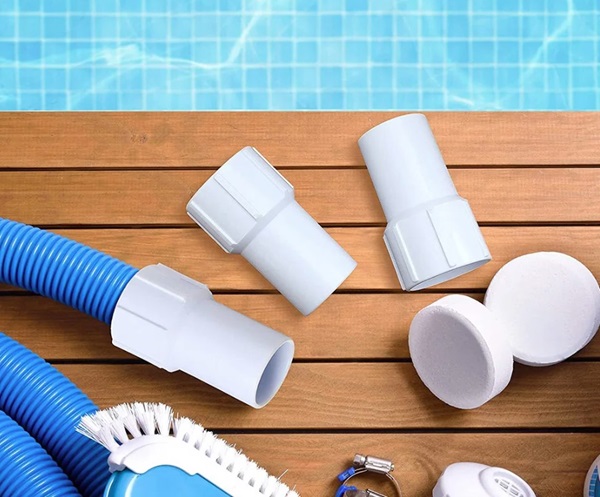
Top-Rated Pool Supply Stores and Online Marketplaces
- Amazon: Amazon offers a wide selection of pool vacuum hose cuffs and accessories from various brands. You can browse through customer reviews, compare prices, and take advantage of fast shipping options.
- PoolSupplyWorld: PoolSupplyWorld is a reputable online retailer specializing in pool supplies, including hose cuffs and accessories. They often carry a range of products from trusted brands and offer competitive prices.
- In The Swim: In The Swim is another popular online pool supply store that provides a variety of pool accessories, including hose cuffs. They offer a satisfaction guarantee and excellent customer service.
- Local Pool Supply Stores: Consider visiting local pool supply stores in your area to see their selection of hose cuffs and accessories. Local stores may offer personalized assistance and advice from knowledgeable staff.
Reading Customer Reviews to Choose the Best Products
- Product Ratings and Reviews: When browsing online marketplaces, pay attention to product ratings and customer reviews. Look for products with high ratings and positive feedback from customers who have used them.
- Feedback on Durability and Performance: Read reviews to learn about the durability and performance of the hose cuffs and accessories. Look for comments on ease of installation, flexibility, and resistance to wear and tear.
- Consider Verified Purchases: Give more weight to reviews from verified purchasers, as they are more likely to provide genuine feedback based on their actual experiences with the product.
Warranty and Customer Service: What to Look for When Purchasing
- Warranty Coverage: Check if the hose cuffs and accessories come with a warranty from the manufacturer. A warranty provides added protection against defects and malfunctions, giving you peace of mind with your purchase.
- Customer Service Reputation: Research the reputation of the seller or manufacturer regarding customer service. Look for companies known for their responsive and helpful customer support in case you encounter any issues with your purchase.
- Return Policy: Review the return policy of the retailer or manufacturer to understand your options in case you need to return or exchange the product. A flexible return policy can be beneficial if you’re not satisfied with your purchase.
By following these steps, you can easily replace your pool vacuum hose cuff and ensure a clean and efficient swimming experience. Remember to consult your pool system manual for specific instructions and compatible parts.

Meet David Thomas, a seasoned professional with nearly 8 years of experience specializing in inspecting and resolving issues related to swimming pools. With his expertise and meticulous attention to detail, David ensures the safety and functionality of pools, making them a refreshing oasis for all to enjoy. Whether it’s troubleshooting equipment or maintaining water quality, David’s proficiency guarantees top-notch solutions tailored to meet every pool owner’s needs.
